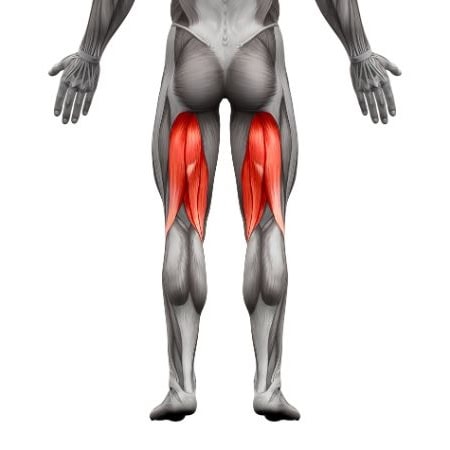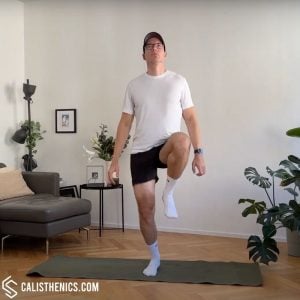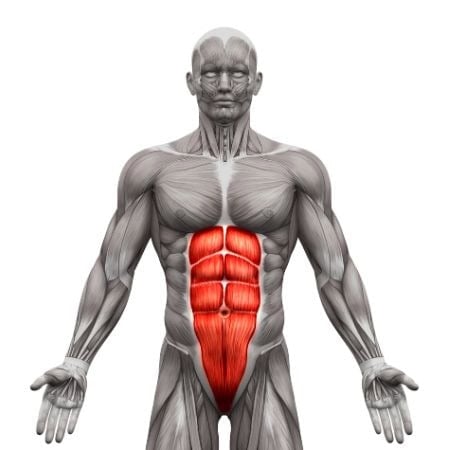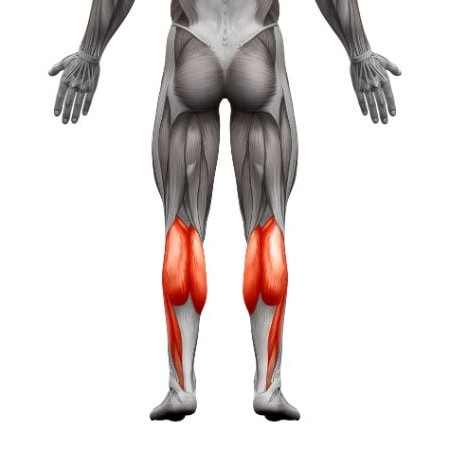High Knees
How to do High Knees?
High Knees is a dynamic calisthenics cardio exercise that combines running in place with exaggerated knee lifts. It’s a staple in warm-ups, HIIT circuits, and athletic conditioning routines thanks to its ability to elevate the heart rate quickly, activate the hip flexors, and improve lower-body coordination. While it may seem simple at first glance, High Knees demand speed, rhythm, and total-body engagement, making them far more than just a “filler” movement.
Performed by running in place while lifting your knees to waist height, High Knees can be scaled up or down depending on your intensity, tempo, and range of motion. They’re excellent for improving running mechanics, building endurance, and enhancing coordination between the lower body and core. The movement is low-impact when done slowly but can become highly intense at full speed.
No equipment is needed for High Knees, making them perfect for home workouts, travel sessions, or warm-ups anywhere. A non-slip floor or soft surface is ideal to reduce joint impact during extended bouts. Beginners can start at a slower pace or reduce the knee height, while advanced athletes can integrate High Knees into explosive sprint conditioning or HIIT sessions.
How to Perform High Knees
1. Starting Position
• Stand tall with feet hip-width apart, arms bent at 90 degrees, hands roughly chest height.
• Keep your core braced, chest upright, and gaze forward.
2. Begin the Movement
• Drive one knee up toward your chest or hip level while swinging the opposite arm forward (as you would while running).
• Quickly switch legs, alternating knees at a rapid pace as you run in place.
3. Focus on Form
• Land lightly on the balls of your feet, minimizing ground contact time.
• Keep your back tall—avoid leaning back or hunching forward.
• Maintain a quick, rhythmic cadence that matches your breathing.
4. Breathing Pattern
• Breathe steadily and rhythmically to match your tempo.
• Inhale and exhale lightly through your nose or mouth—don’t hold your breath.
5. Repetitions and Duration
• Perform in sets of 20–40 seconds or aim for 30–60 reps (15–30 per leg).
• Ideal for HIIT intervals, warm-ups, active recovery, or cardio conditioning circuits.
Benefits of High Knees
• Improves Cardiovascular Endurance – Rapid pace raises heart rate, improving aerobic and anaerobic capacity.
• Builds Lower Body Power and Coordination – Engages quads, hip flexors, glutes, and calves while improving rhythm.
• Strengthens the Core – The knee drive requires abdominal control and stabilization.
• Enhances Agility and Footwork – Helps develop speed and responsiveness for athletes.
• Increases Running Efficiency – Mimics aspects of sprint mechanics, promoting better stride and posture.
• Great for Fat Loss and Conditioning – High intensity helps burn calories quickly and efficiently.
Common Mistakes to Avoid
• Low Knee Height – Aim to bring your knees to waist level or higher for full benefit.
• Leaning Back or Slouching – Keep your torso upright and stable to protect your spine and improve mechanics.
• Flat-Footed Landing – Stay light on the balls of your feet to absorb impact and maintain speed.
• Floppy Arms – Use your arms to drive rhythm and balance; don’t let them dangle or stay stiff.
• Inconsistent Pace – Choose a rhythm you can maintain for the duration of the set.
Similar Exercises
While High Knees are a bodyweight staple, some gym-based alternatives that offer similar benefits include:
• Treadmill Sprints or Incline Runs – Replicates the speed and cardio intensity.
• Jump Rope – Similar foot speed, calf engagement, and coordination.
• Skater Hops or Lateral Bounds – Train agility and lower-body power.
• Bicycle Sprints (Air Bike) – Builds cardio and leg power with low joint impact.
• Kettlebell Swings (for Cardio) – Offers full-body cardio with a posterior chain focus.
Tips for the proper execution of High Knees
Keep your core tight to stabilize your spine and prevent over-rotation.
Pump your arms naturally—elbows bent and driving in sync with your legs.
Look straight ahead rather than down to keep posture aligned.
Use a metronome or playlist with a steady beat to maintain tempo.
Start slow to warm up and ramp up intensity gradually.
Train barefoot or in minimalist shoes (on soft flooring) to improve foot strength and awareness.
Muscles worked when doing High Knees
Primary Muscles
•Hip Flexors (Iliopsoas) – Drive the knees upward during each repetition.
•Quadriceps – Control knee extension and absorb impact with each landing.
•Calves (Gastrocnemius & Soleus) – Propel the bounce and quick foot turnover.
•Abdominals & Obliques – Stabilize the torso and assist in hip drive.
Secondary Muscles
•Glutes – Activate during knee recovery and foot strike.
•Hamstrings – Help coordinate the leg drive and absorb eccentric load.
•Deltoids & Arm Muscles – Active during the arm pump to aid rhythm and balance.
Primary Muscle(s):
Secondary Muscle(s):

Hamstring
Equipment needed for High Knees
No equipment needed for this exercise.
Adjust the difficulty of High Knees
The beauty of High Knees lies in their scalability and versatility. Beginners can march or move slowly while refining balance and coordination, while advanced athletes can sprint in place with explosive power for cardio burnout. The move adapts well to fat-loss programs, agility training, warm-ups, and full-body circuits. Whether you’re training at home, in a gym, or outdoors, High Knees are a low-barrier, high-return exercise you can incorporate into almost any routine.
How to make High Knees harder?
How to make High Knees easier?
How to make High Knees harder?
To make High Knees harder:
-
Increase Tempo – Sprint in place with maximum effort for short bursts.
-
Wear a Weight Vest – Adds resistance and elevates the cardiovascular demand.
-
Use a Resistance Band Around the Thighs – Increases challenge for hip flexors and glutes.
-
Combine With Other Movements – Add burpees, squat jumps, or mountain climbers for full-body circuits.
-
Perform Tabata Rounds – 20 seconds of work, 10 seconds rest, for 4+ minutes.
How to make High Knees easier?
To make High Knees easier:
-
March in Place with High Knees – Step rather than run, focusing on form.
-
Reduce Knee Height – Lift knees to hip or mid-thigh level instead of full range.
-
Lower the Tempo – Slow down the cadence while maintaining coordination.
-
Use Shorter Intervals – Start with 15–20 seconds per set.
-
Add a Wall or Chair for Balance – If needed, use a support during early practice.





